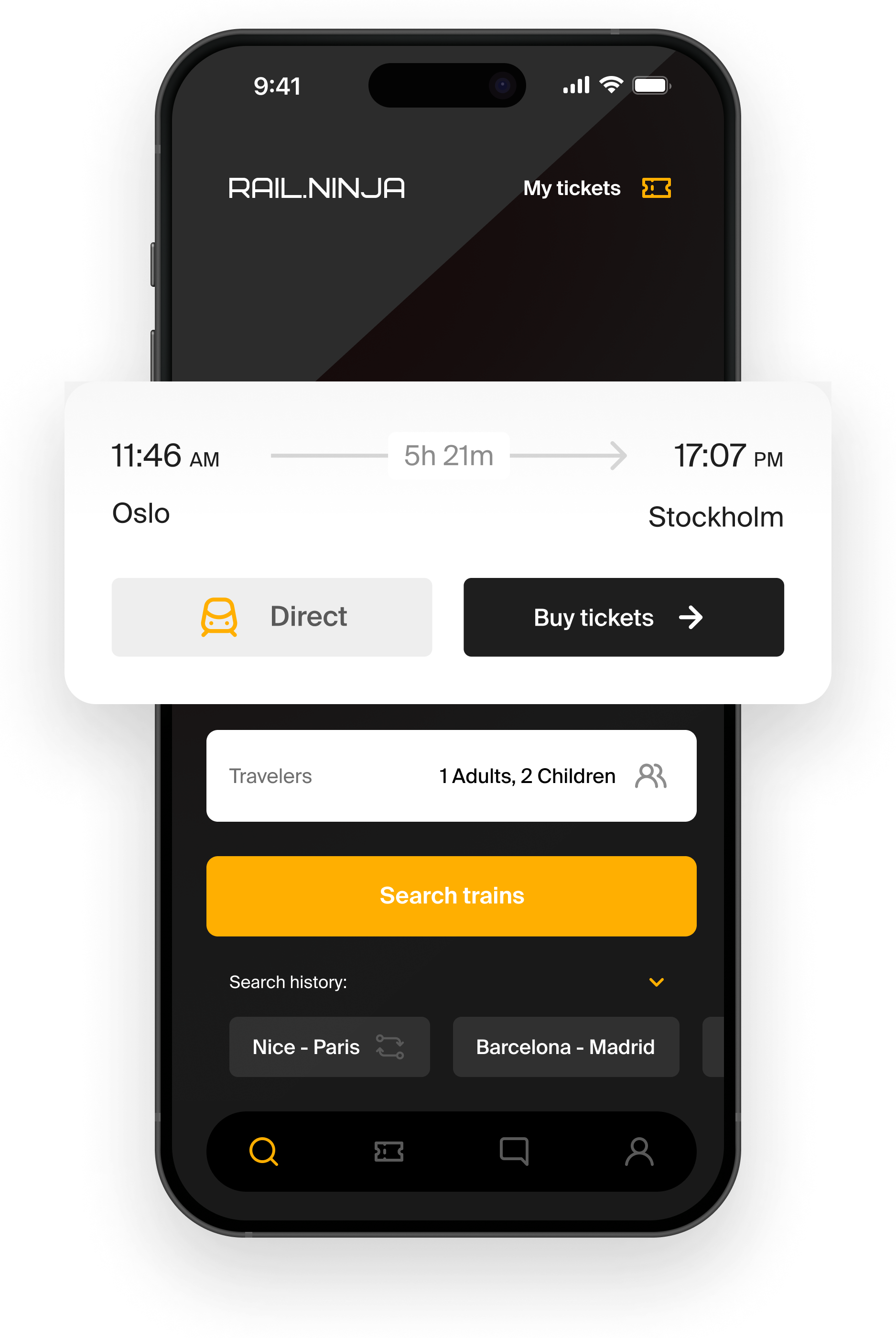About Norwegian Railway System
The Norwegian railway system is a national treasure and one of Norway's biggest travelers' attractions. Don't miss out on this opportunity for an ECO-friendly journey through Norway vastness!
Norwegian railway system has grown rapidly in the last century and currently is helping more than 70 million travelers discover magnificent parts of the country in the safety and comfort of a train
| Norwegian Trains Story It all begun in 1805, when the first railway in Norway opened, connecting Damtjern and Storflåtan lakes. Rail tracks were 1,400 m long and were built to help transport timber from Land district to capital of Oslo. What's so interesting about the trains that operated on the first rail tracks in Norway is that horses pulled them. After 44 years the first Norwegian railway was closed and five years laters stationary steam engines have been built to replace the horsepower. This was the beginning of public railway transport in Norway. The first public line was called Trunk line and was opened between Oslo and Eisdvoll in 1854. Besides the passenger service, the line was a vital aspect in successful lumber transportation from Mjøsa (the largest lake in Norway) to Oslo. |
| The Growth of Railway The Trunk Line, also known as the Hoved line, was only the start of public railway development in Norway. The second line opened between Hamar and Grundset in 1862. This line, currently part of Røros (named after a mining town in Norway), was built with a narrow gauge to save on costs. Because of this, the line became the first locomotive-hauled 1.067mm line in the world. The said railway tracks connected Central Norway with Oslo, marking the peak of railway boom era. Shortly after opening Røros line, the railway was expanded to include Bergen and Trondheim systems. Both started with electric cars. Other major construction works started in the 1910s and aimed to connect Eastern and Western Norway. In that period more famous names joined the Norwegian railway - Bergen and Dovre lines. In addition, the operation of railway improved as well - narrow gauge was replaced by the standard as well as parts of the railway became electrified. |
| World War II came with an even more significant expansion of the rail network. After Germans occupied Norway, they started work on the Nordland and Sørland lines which had a defense purpose and aimed to protect the occupied land from opponents' attacks. After the war was over, Norwegian State Railways were focused on electrifying half of the railway systems and finishing construction work on the said Nordland line. The steam locomotive was also replaced with electric or diesel powered engines. In 1966 Oslo T-bane (Metro) started operating. It was the only rapid transit system in the whole country and consisted of five lines that connected the city center with neighboring municipalities like Bærum. Norwegian metro served 101 stations and was 85 kilometers long. Nowadays, more than 300 thousand passengers ride on the trains. |
All in all, Norwegian railway system has grown rapidly in the last century and currently is helping more than 70 million travelers discover magnificent parts of the country in the safety and comfort of a train.
Try the new Rail Ninja App today
Get our free app to book & manage your trips on the go

Popular Norwegian Train Routes
Would you like to experience a train journey in Norway? Choose your perfect ticket from different routes today!




